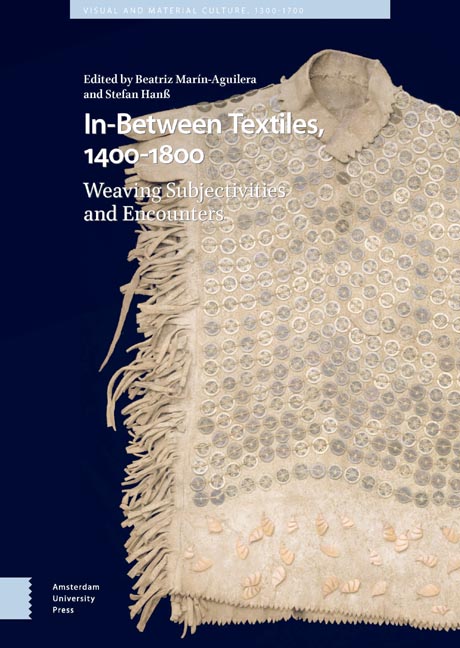Book contents
- Frontmatter
- Dedication
- Miscellaneous Frontmatter
- Table of Contents
- List of Illustrations
- Acknowledgements
- 1 Subjectivities In-Between Early Modern Global Textiles
- Part I Unhomeliness, Mimicry, and Mockery
- Part II The Material Enunciation of Difference
- Part III Identity Effects In-Between the Local and the Global
- Part IV Material Translation and Cultural Appropriation
- Archives, Libraries, and Museums (Abbreviations)
- Select Bibliography
- Index
10 - Tornasol Techniques as Cultural Memory: Andean Colonial Practices of Weaving Shimmering Cloth, and Their Regional Forebears
Published online by Cambridge University Press: 14 October 2023
- Frontmatter
- Dedication
- Miscellaneous Frontmatter
- Table of Contents
- List of Illustrations
- Acknowledgements
- 1 Subjectivities In-Between Early Modern Global Textiles
- Part I Unhomeliness, Mimicry, and Mockery
- Part II The Material Enunciation of Difference
- Part III Identity Effects In-Between the Local and the Global
- Part IV Material Translation and Cultural Appropriation
- Archives, Libraries, and Museums (Abbreviations)
- Select Bibliography
- Index
Summary
Abstract
This chapter challenges traditional interpretations of the shimmering effects of Andean colonial cloth that are widely considered to result from the introduction of Asian silks to the New World. Instead, such techniques illustrate a much longer-term regional strategy concerned with cultural continuity, subjectivity, and memory, through the material replication of ancestral knowledge. Early modern shimmering Andean textiles, this chapter argues, materialised indigenous cultural memory, persistence, and resistance, and the making of indigenous communal identities in a changing world. The colonial setting opened up a liminal space in which the material articulation of these pre-colonial cultural continuities became a crucial element of identification, memory, and identity.
Keywords: identity politics; Critical Indigenous Studies; colonial Andes; silks; liminality
Introduction
Existing studies on the “shot” or “changeable” effects, known in Spanish as tornasol (“it turns to the sun”), found in some Andean textiles, tend to assume these are a uniquely colonial phenomenon. Their arguments tend to trace the introduction of Chinese silk into the New World in the emerging global trade in cloth from the late sixteenth century onwards, directed at the major exchanges between these and Mexican and Andean silver.
Documentary evidence indicates that silk skeins, raw silk, woven silk in bales, and finished products were carried first in chests on Chinese junks to the Spanish trading port of Manila in the Philippines. Then, from 1571 onwards, the Manila Galleons, loaded with these products, crossed the Pacific Ocean, bringing Chinese silk and porcelain to the viceroyalty capitals, docking at Acapulco, and from there the goods were transported overland to Mexico City. From 1581, transhipments sailed on to Lima (El Callao), often illicitly as the Spanish were wary of the fiscal consequences of this trading. Once in Lima, the silk was exchanged in the local markets for silver from Potosí. Similar voyages were made across the Atlantic by the Tierra Firme fleet carrying this time Spanish silk, setting sail from Seville’s port, at Cadiz, to trade with Vera Cruz in Mexico, and thence down to Peru. Much Andean silver delivered back to Cadiz, as its first return port of call, was invariably traded on to other European countries, before being traded on again towards the East, notably in a contribution towards the building of the Taj Mahal.
- Type
- Chapter
- Information
- In-Between Textiles, 1400-1800Weaving Subjectivities and Encounters, pp. 219 - 240Publisher: Amsterdam University PressPrint publication year: 2023



